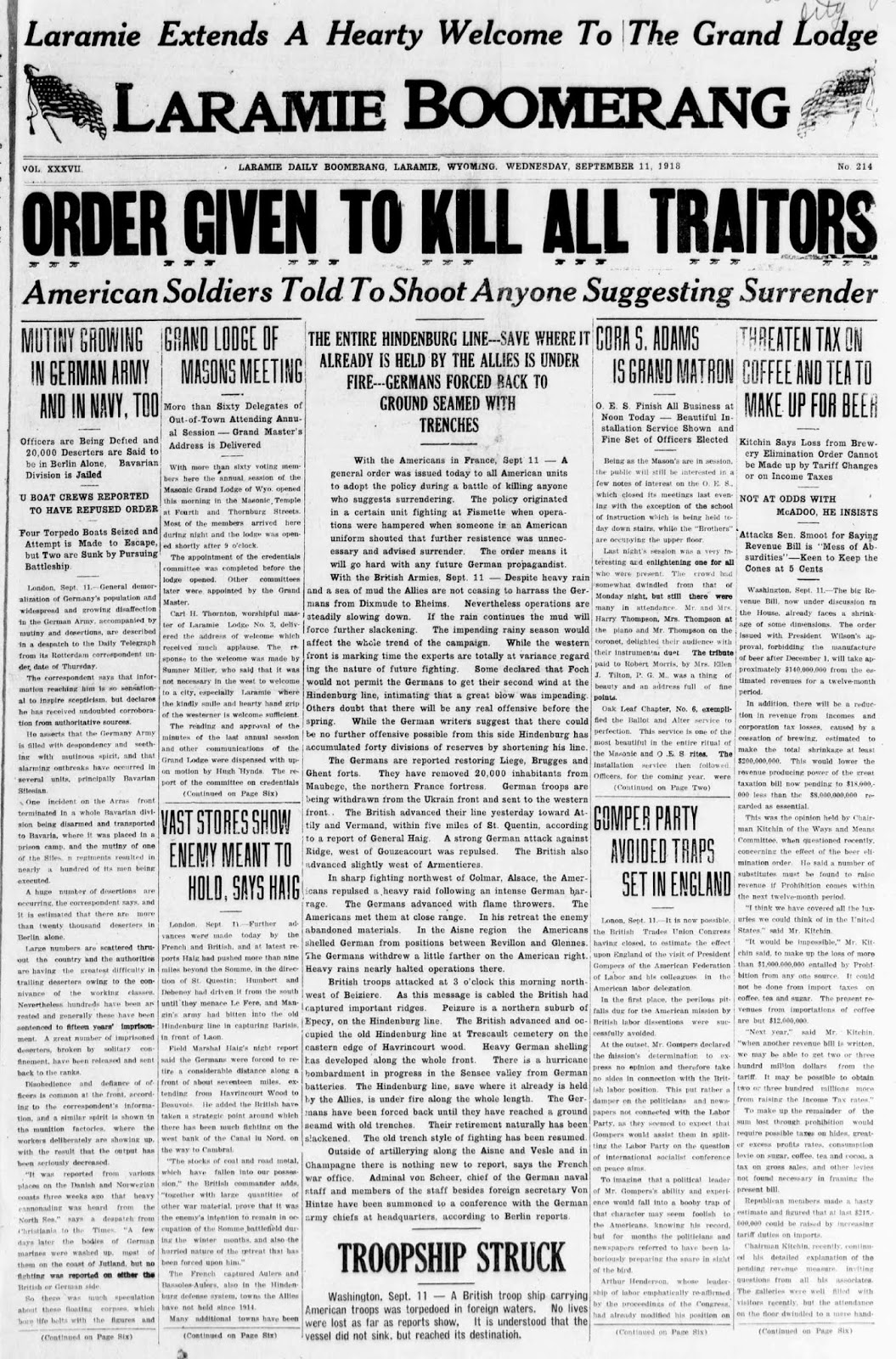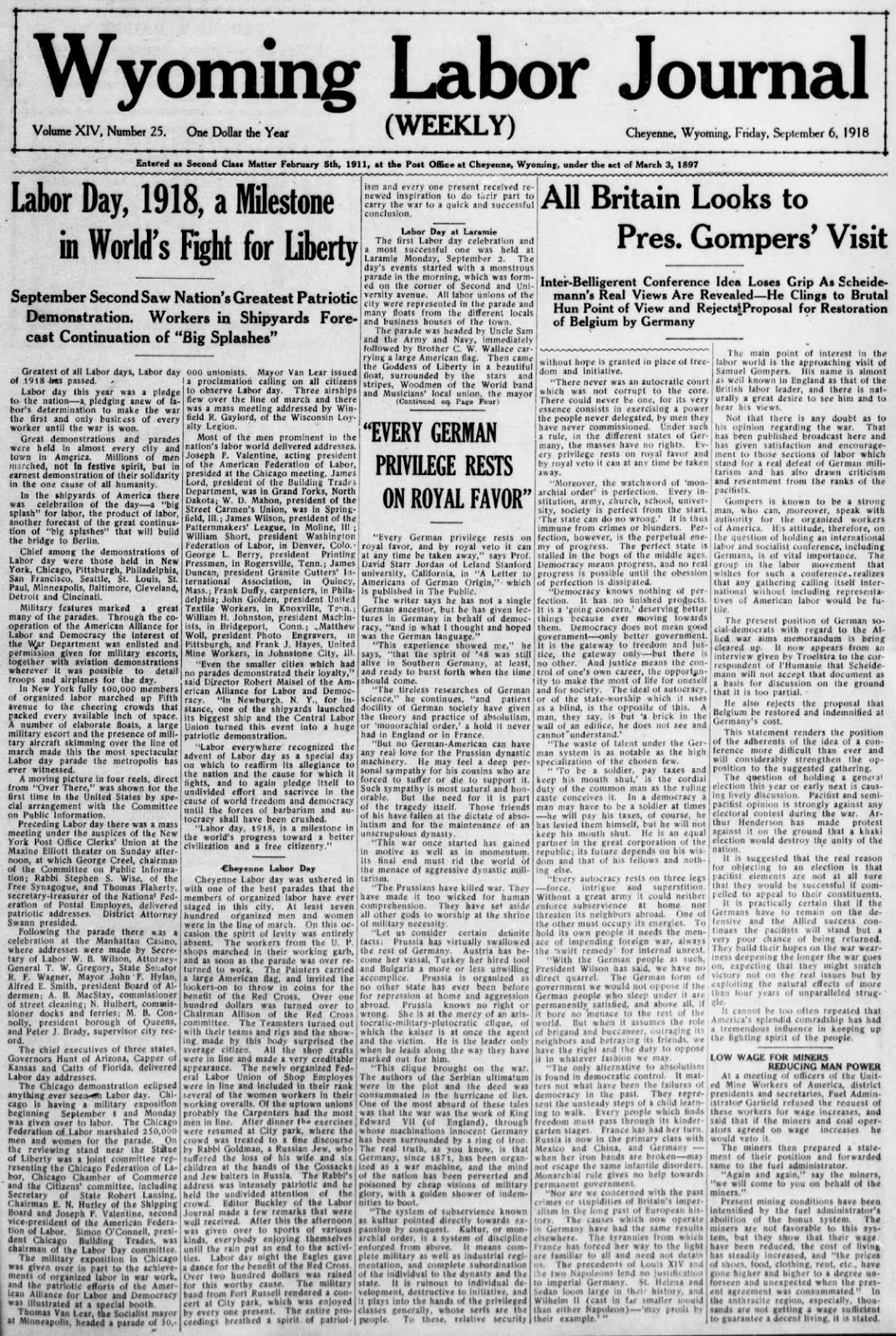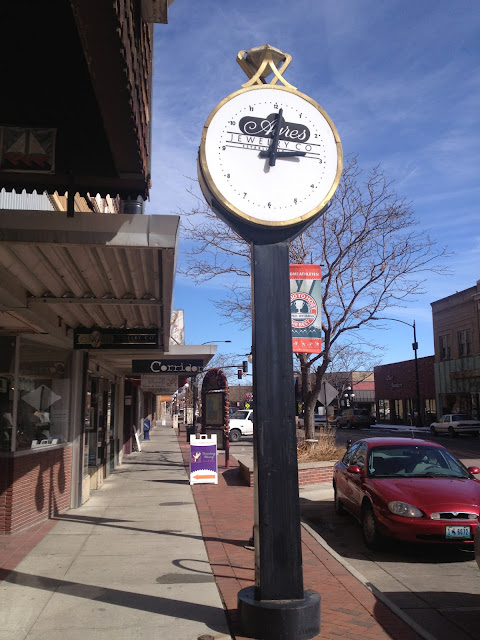Dan Daly being awarded a French decoration during World War One. Daly was born in 1873 and had entered the Marine Corps during the Spanish American War in 1899, at which time he was 26 years old. He won his first Medal of Honor during the Boxer Rebellion. He would have been 45 years old at the time he won his second Medal of Honor during World War One. He'd serve on until age 56 and then retire, dying at age 63 in 1937. In some ways, Daly is emblematic of the NCO core of the time.
It's really common to read the statement about all soldiers being "young" during World War One, and certainly there were a lot of young soldiers who fought in the Great War. But they may not have been as uniformly young as a person might assume.
Let's start with a few facts about the armed forces of the United States during the second decade of the 20th Century.
The service offered retirement, however, to an enlisted man at the time who had served for 30 years. The period and system was similar for officers. Retirement after 30 years was at 75% of base pay, not a bad retirement for men, and they were all men, who were used to their existing level of pay.
To understand the impact of this, you next have to consider that the enlistment age for military service had been higher than it is today until just before World War One. In 1875 Congress had acted to pass the following provisions regarding military enlistment in the Army:
Sec. 1116. Recruits enlisting in the Army must be effective and able-bodied men, and between the ages of sixteen and thirty-five years, at the time of their enlistment. This limitation as to age shall not apply to soldiers re-enlisting.
Sec. 1117. No person under the age of twenty-one years shall be enlisted or mustered into the military service of the United States without the written consent of his parents or guardians: Provided, That such minor has such parents or guardians entitled to his custody and control.
Sec. 1118. No minor under the age of sixteen years … shall be enlisted or mustered into the military service.
So enlistment was allowed down to age sixteen, but only with parents permission. And enlistment was allowed up to age thirty five.
In 1899, in the wake of the Spanish American War, Congress changed Sec 1116 however to provide that you had to be eighteen years to enlist, and that still required parental approval. It wasn't until 1916 that Congress changed the statutes so that parental approval was no longer required for those eighteen years of age.
If this seems odd, it frankly fit the concepts of adulthood at the time, and it oddly squares with the current psychological concepts of when somebody is fully adult. At the time, and we've addressed this elsewhere, most men lived at home until married and even though many men left home for work prior to twenty years of age, many did not and lived at home. Barring enlistment under your own volition until age twenty-one made sense, just as originally allowing enlistment down to age sixteen under some circumstances did as well.
Put in context, therefore, most soldiers who had served long enough to retire were in their early 50s. They had to retire at age 64, which was the maximum age a serving soldier could be at the time.
This was changed during World War Two to expressly try to weed out older men, particularly officers, who were regarded as no longer sufficiently mentally flexible for modern warfare. But that was to come later. During World War One the 20 year retirement period for early retirement was in the future. Barring injury, career soldiers had to serve 30 years in order to retire or make it to 40 years to retire on full pay.
That meant, therefore, that for soldiers who had enough time in to retire in the year we've been looking at, 1918, had entered the Army in 1888.
But another way, that means career soldiers who were eligible to retire had entered the Army prior to the Battle of Wounded Knee, which is generally regarded as the last significant battle of the Indian Wars (it's not the last battle).
Artillerymen of Wounded Knee, 1890.
By way of some examples, John Pershing, commander of the AEF, had entered the Army after attending West Point in 1886. Douglas MacArthur, who was considerably younger, had entered the Army in 1903.
Captain John J. Pershing in 1902. At this point he had already been in the Army for eighteen years.
Now, as we've already discussed, the size of the Army prior to World War One was tiny, so this only applies to a small number of the men who served in the service in the Great War (although we must also consider the Navy and the Marines in this as well. But it is significant.
U.S. officers in Cuba during the Spanish American War, including Dr. Leonard Wood, in a combat command, second from right (Theodore Roosevelt far right). Wood would later be the military governor of Cuba and was widely regarded as the logical commander for the AEF. His association with Roosevelt certainly operated against that. Wood had entered the Army as a contract surgeon in 1886, which was the norm for military surgeon's at the time, and had won the Medal of Honor for carrying dispatches 100 miles in the campaign against Geronimo.
If we look at the National Guard the situation gets much murkier. There was no retirement for National Guardsmen at all until just prior to World War Two and, therefore, there was little reason to stay in the National Guard for thirty years, although many did. And Guard units were much looser in adherence to age limits, so they not infrequently allowed enlistment of underage soldiers all the way up until just before World War Two. So that changes our consideration quite a bit, as the National Guard was a significant part of the Army during the war.
Hugh Scott, who was Army Chief of Staff at the start of World War One and who had to retire upon reaching age 64. He was born in 1850 and had entered the Army in June 1876, meaning that he had actually entered the Army just before the Battle of the Little Big Horn.
So were draftees. Conscription brought huge numbers of men into the service during the Great War, although only to the Army. The other services did not draw conscripts. The original conscription ages were from age 21 to 31. This was changed later to age 18 to 45. Voluntary enlistment ages comported in expanding upwards.
Now, these points can be overdone. Most men who joined the Army as enlisted men did not stay in it, serving a single enlistment. They may have been older, on average, than men who enlisted after the enlistment age became 18, but just like those men now, they usually didn't make a career of it. But at the same time, the Army was smaller then and the up or out system that exists now, did not exist then except, to a limited extent, for officers.
And most men who came into the U.S. Army, Navy and Marine Corps during World War One did so solely for the duration of the war. They had no intent to remain in the service at all. And those who came in via the draft, and that was the large majority, were scaled towards the lower age, intentionally, rather than the higher age. So most U.S. servicemen during World War One were undoubtedly in their twenties.
Still, that's significant. . . and not only for WWI but for later U.S. wars as well. Contrary to widely held belief, the U.S. military isn't usually made up of "kids". Teenage combatants have certainly existed, but they are not and never have been the rule.
For what its worth, the Army has in recent years nearly returned to the WWI, and WWII, upper age limits for enlistment and in some ways we see the age story of a century ago repeating. The upper age limit for the Army is now 42, two years younger than what the Army asked for, which was age 44. That's fairly amazing, but it shows that the average condition of people in their 40s is often better than it was in prior decades when chronic injuries took their toll. Indeed, while we have pointed out that people really aren't living longer than they used to, as is so often claimed, they are often quite a bit healthier than they used to be due to medical advances and other factors.
Now, these points can be overdone. Most men who joined the Army as enlisted men did not stay in it, serving a single enlistment. They may have been older, on average, than men who enlisted after the enlistment age became 18, but just like those men now, they usually didn't make a career of it. But at the same time, the Army was smaller then and the up or out system that exists now, did not exist then except, to a limited extent, for officers.
And most men who came into the U.S. Army, Navy and Marine Corps during World War One did so solely for the duration of the war. They had no intent to remain in the service at all. And those who came in via the draft, and that was the large majority, were scaled towards the lower age, intentionally, rather than the higher age. So most U.S. servicemen during World War One were undoubtedly in their twenties.
Still, that's significant. . . and not only for WWI but for later U.S. wars as well. Contrary to widely held belief, the U.S. military isn't usually made up of "kids". Teenage combatants have certainly existed, but they are not and never have been the rule.
For what its worth, the Army has in recent years nearly returned to the WWI, and WWII, upper age limits for enlistment and in some ways we see the age story of a century ago repeating. The upper age limit for the Army is now 42, two years younger than what the Army asked for, which was age 44. That's fairly amazing, but it shows that the average condition of people in their 40s is often better than it was in prior decades when chronic injuries took their toll. Indeed, while we have pointed out that people really aren't living longer than they used to, as is so often claimed, they are often quite a bit healthier than they used to be due to medical advances and other factors.



































